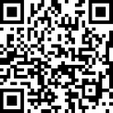| STEPS | 步骤及说明 |
1. Wash hands.
* Reduces transmission of microorganisms. | 1.洗手
* 减少微生物传播 |
2. Measure for crutch length: 3 to 4 finger widths from axilla to a point 15 cm (6 inches) lateral to client's heel is standard
* Ensures that crutches are individualized to client's height. | 2.测定拐杖高度:标准为:腋下3-4指宽处至病人脚跟向外15cm(6时)处的长度。
* 确保拐杖适合每个病人身高度。 |
3. Position crutch handgrips with elbows flexed at 20- to 25-degree angle. Ankle of elbow flexion should be verified by goniometer
* Prevents client's body weight from being supported by axillae, which would result in nerve damage. | 3.屈肘20-25度,放好拐杖把手;屈肘角度应用测角仪确定
* 避免病人体重的腋窝支撑,否则会导致神经损害。 |
4. Verify that distance between crutch pad and axilla is 3 to 4 finger widths
* Prevents axillary skin breakdown secondary to pressure from crutch pad. | 4.核实拐杖垫与腋窝间有3-4指宽的距离
* 避免因拐杖垫压迫而引起腋窝皮肤裂开。 |
5. Instruct client to assume tripod stance. Tripod stance is formed when crutches are placed 15 cm (6 inches) in front and 15 cm to side of each foot
* Improves balance by providing wider base of support. No weight should be borne by axillae. | 5.指导病人采三角站立姿势。三角站立姿势;拐杖置于体前方15cm、离脚跟15cm的交接处
* 增加支撑面宽度,改善平衡。不得将体重压在腋窝。 |
6. Teach client one of four crutch-walking gaits. (Darkened areas on Figs. 28 to 30 represent weight-bearing areas):
* Allows client to ambulate safely. Specific type of gait chosen depends on client's impairment and physician's order. | 6.教会病人使用四种持拐杖步行法中的一种
* 使病人行走安全。选用何种步法取决于病人的损伤情况及医生医嘱。 |
| l Four-point alternating, or four-point gait, gives stability to client but requires weight bearing on both legs. Each leg is moved alternately with each crutch so three points of support are on floor at all times | 四点轮替或四点法:采用本步法可使病人稳定,但要求将体重落于双腿。两腿随拐杖交替移动,因此,地面始终留下三个支撑点 |
| l Three-point alternating, or three-point gait, requires client to bear all weight on one foot. Weight is borne on uninvolved leg, then on both crutches, and the sequence is repeated. Affected leg does not touch ground during early phase of three-point gait. Gradually client progresses to touchdown and full weight bearing on affected leg | 三点轮替或三点步态:要求病人单脚承受全部体重。先由未受伤一脚承担全部体重,然后移至双拐,以此类推。在三点步法的初期,伤腿不接触地面。经过一段时间后,病人慢慢触地,直至全部体重移至患腿 |
| l Two-point gait requires at least partial weight bearing on each foot. Client moves each crutch at same time as opposing leg so crutch movements are similar to arm motion during normal walking | 两点步法:本法要求伤腿至少承担部分体重。病人在移动拐杖的同时移动相对的一条腿。拐杖运动正好与正常行走时的手臂运动相同 |
| l Swing-through, or swing-to gait is frequently used by paraplegics who wear weight-supporting braces on their legs. With weight on supported legs, the client places crutches one stride in front and then swings to or through them while they support his weight. | 迈越步/摇摆步态:本法通常用于双腿带有承重梏具的截瘫病人。先将体重落于支撑腿,病人随即将拐杖前移一步,然后,在双拐支撑体重时病人顺势向前摆动,越过拐杖。 |
7. Teach client to ascend and descend on stairs:
* Reduces risk of further damage to musculoskeletal system and risk of falling. | 7.教病人上、下楼梯:
* 减少进一步损伤肌肉骨骼系统的危险及摔倒危险。 |
Ascend
l Assume a tripod position.
l Transfer body weight to crutches
l Advance unaffected leg between crutches and stair.
l Shift weight from crutches to unaffected leg
l Align both crutches on stair | 上楼:
a. 采三足鼎立位。
b. 将体重移至拐杖
c. 将未受伤腿前进至拐杖和楼梯之间。
d. 将体重从拐杖移至未受伤腿
e. 调整双拐,使其处于同一直线 |
Descend
l Transfer body weight to unaffected leg
l Place crutches on stair and begin to transfer body weight to crutches, moving affected leg forward
l Align unaffected leg on stair with crutches | 下楼:
a. 将体重移至未受伤腿
b. 将双拐置于楼梯,开始将体重移至双拐,受伤腿向前移动
c. 调整楼梯上的受伤腿,使其与双拐成一直线 |
8. Teach client how to sit in chair and how to get up from chair:
* Provides safe method of sitting in and getting up from chair. Reduces further damage to client's musculoskeletal system and the risk of falling. | 8. 教会病人如何在椅子上起坐。
* 提供安全的椅上起坐方法,减少病人肌肉骨骼系统进一步损伤及摔倒危险。 |
Sitting
l Client positioned at center front of chair with posterior aspects of legs touching chair
l Client holds both crutches in hand opposite affected leg. If both legs are affected, crutches are held in hand on client's strong side
l Client grasps arm of chair with other hand and lowers body into chair
Getting up
l Perform three steps above in reverse order. | 坐:
a. 病人位于椅子前面中央,两腿后面接触椅子
b. 病人将双拐握于受伤腿对侧的手中。如双腿受伤,双拐应握于病人较为健康一侧的手中。
d. 病人用另一只手抓住椅子扶手,坐进椅子。
起:
按相反次序操作上述三步。 |
9. Wash hands.
* Reduces transmission of microorganisms. | 9.洗手。
* 减少微生物传播。 |
10. Record gait and procedures taught and client's ability to perform gaits in nurse's notes.
* Documents teaching and client's learning. | 10.记录所教步法及程序及病人实施步法的能力。
* 文件证明教育及病人学习情况。 |










 扫一扫立即下载
扫一扫立即下载


